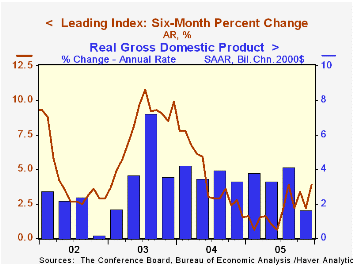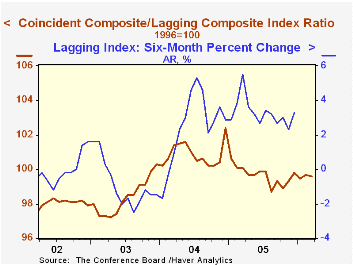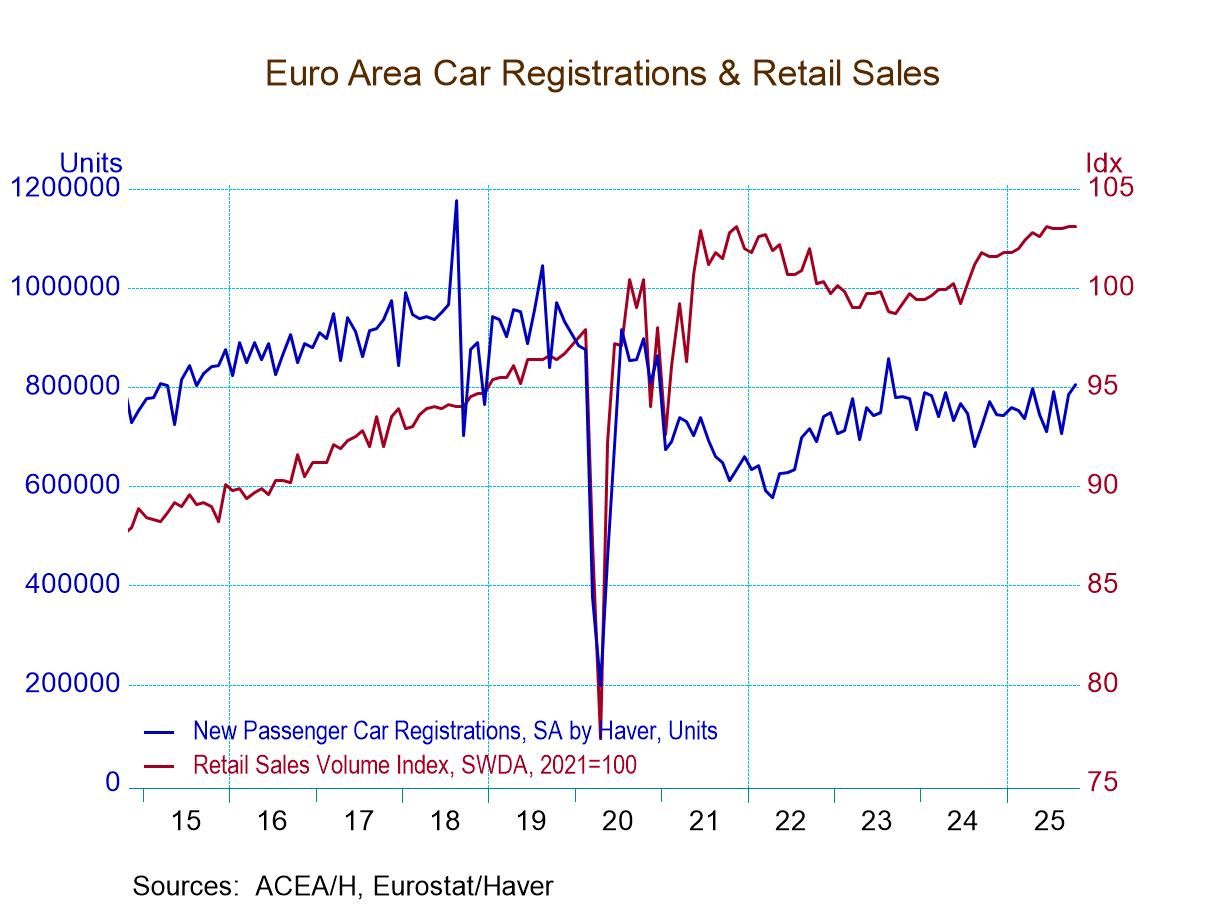 Global| Apr 20 2006
Global| Apr 20 2006Leading Economic Indicators Down For Second Month
by:Tom Moeller
|in:Economy in Brief
Summary
The Conference Board reported that during March, the Composite Index of Leading Economic Indicators fell 0.1% following a 0.5% February decline that was deeper than initially reported. The decline compared to Consensus expectations [...]

The Conference Board reported that during March, the Composite Index of Leading Economic Indicators fell 0.1% following a 0.5% February decline that was deeper than initially reported. The decline compared to Consensus expectations for no change.
Six month growth in the leaders slipped to 2.9%, about the middle of the range during the last several months. During the last ten years there has been a 43% correlation between the six-month change in the leading indicators and quarterly growth in real GDP.
The breadth of one month gain amongst the 10 components of the leading index improved to 60% in March from a downwardly revised 40% during February.
Lower building permits and higher initial claims for unemployment insurance made the largest negative contributions to last month's decline in the leaders last month.
For the third consecutive month, the spread between yields on the 10 year Treasury Note and Fed funds made a minimal 0.01 percentage point positive contribution to the leaders. The method of calculating the contribution to the index from the interest rate yield spread has been revised. A negative contribution will now occur only when the spread inverts rather than when declining as in the past. More details can be found here. 
The leading index is based on eight previously reported economic data series. Two series, orders for consumer goods and orders for capital goods, are estimated.
The coincident indicators rose 0.2% following a like gain in February that was downwardly revised. All of the four component series rose last month and during the last six months. During the last ten years there has been a 64% correlation between the change in the coincident indicators and real GDP growth.
The lagging indicators increased 0.3% following an unrevised 0.1% February up tick. Last month, two thirds of the series' components rose while the ratio of coincident to lagging indicators, a measure of actual economic performance versus excess, slipped in March.
Visit the Conference Board's site for coverage of leading indicator series from around the world.
The latest World Economic Outlook from the International Monetary Fund can be found here.
| Business Cycle Indicators | Feb | Jan | 6 Month Chg., AR | 2005 | 2004 | 2003 |
|---|---|---|---|---|---|---|
| Leading | -0.1% | -0.5% | 2.9% | 2.3% | 7.4% | 5.0% |
| Coincident | 0.2% | 0.2% | 4.4% | 2.2% | 2.5% | 0.4% |
| Lagging | 0.3% | 0.1% | 2.5% | 3.5% | 0.0% | -0.0% |
Tom Moeller
AuthorMore in Author Profile »Prior to joining Haver Analytics in 2000, Mr. Moeller worked as the Economist at Chancellor Capital Management from 1985 to 1999. There, he developed comprehensive economic forecasts and interpreted economic data for equity and fixed income portfolio managers. Also at Chancellor, Mr. Moeller worked as an equity analyst and was responsible for researching and rating companies in the economically sensitive automobile and housing industries for investment in Chancellor’s equity portfolio. Prior to joining Chancellor, Mr. Moeller was an Economist at Citibank from 1979 to 1984. He also analyzed pricing behavior in the metals industry for the Council on Wage and Price Stability in Washington, D.C. In 1999, Mr. Moeller received the award for most accurate forecast from the Forecasters' Club of New York. From 1990 to 1992 he was President of the New York Association for Business Economists. Mr. Moeller earned an M.B.A. in Finance from Fordham University, where he graduated in 1987. He holds a Bachelor of Arts in Economics from George Washington University.






